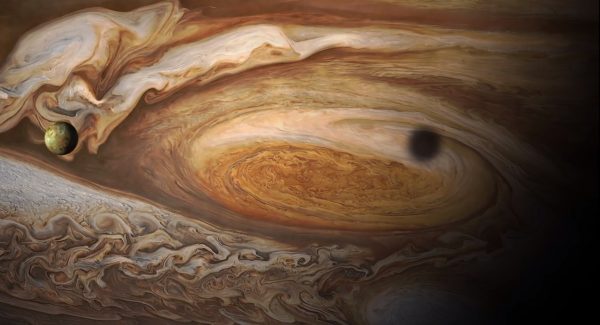A spinning, solar-powered spacecraft as wide as a basketball court will arrive at Jupiter on July 4 to study the giant planet and to take the highest-resolution images of Jupiter in history. NASA’s robotic Juno probe is carrying seven science instruments designed to help scientists figure out how Jupiter formed and evolved. The planet is the most massive in our solar system — a huge ball of gas 11 times wider than Earth. Researchers think it was the first planet to form and that it holds clues to how the solar system evolved.
“One of the primary goals of Juno is to learn the recipe for solar systems,” Scott Bolton, Juno principal investigator, said at a news conference on June 16. “How do you make the solar system? How do you make the planets in our solar system?” Spacecraft have been to Jupiter before, but scientists still are puzzled. What’s going on under Jupiter’s dense clouds? Does it have a solid core? How much water is in its atmosphere? And how deep are those colorful bands and that mysterious giant red spot?



